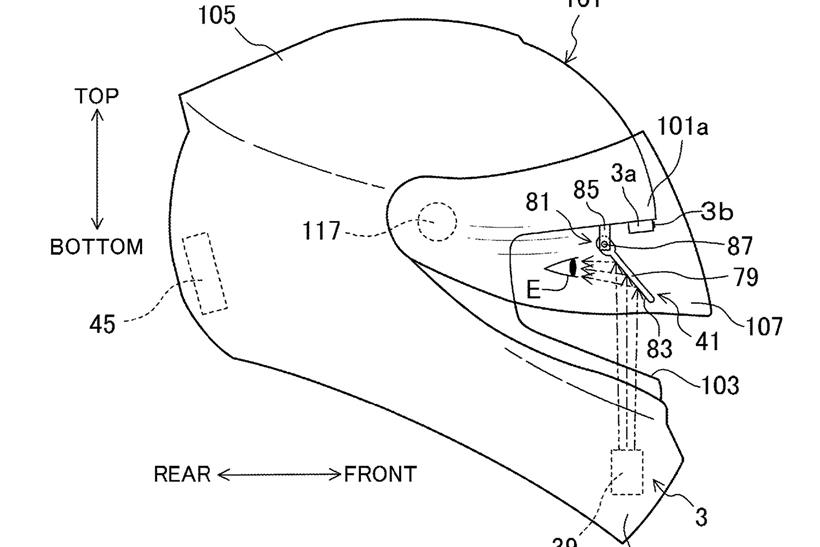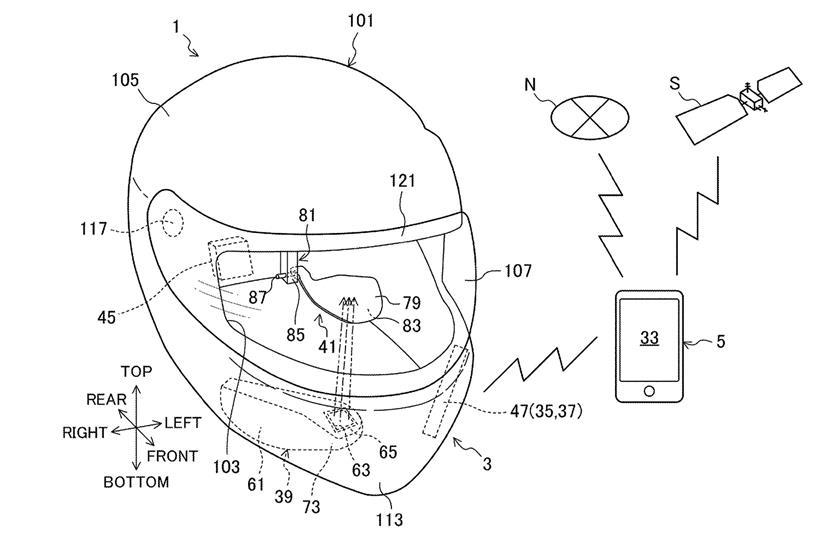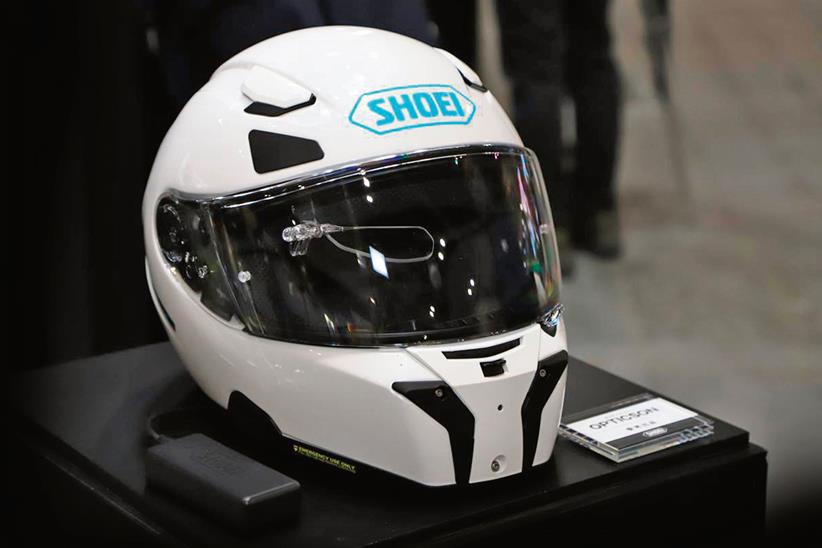Revolutionary Shoei ‘Opticson’ helmet is edging towards production
The idea of having a head-up display (HUD) inside a motorcycle helmet is far from new, but despite dozens of false starts, it’s still not a technology that’s managed to break into mainstream production.
But with helmet giant Shoei demonstrating their planned HUD system at the recent Osaka and Tokyo motorcycle shows there’s a better chance than ever that you’ll soon be able to ride with an in-helmet display.
HUD technology itself isn’t new. Cars with head-up displays have been offered since the 1990s, and in the military the tech has been around even longer. However, the explosion in portable computing power over the last decade or so, demonstrated and driven by the smartphone market, means an affordable, lightweight and rugged helmet-mounted HUD is more possible now than ever before.

Shoei first demonstrated their version of the idea at CES in Las Vegas in 2019, but since then the project has moved on significantly. Now going under the name ‘Opticson’ – which Shoei have trademarked, indicating their commercial intentions for the project – several of the helmets were on display in Osaka and Tokyo in March this year.
The tech is straightforward enough: an inverted image of whatever you want to see on the HUD is projected onto a semi-transparent, angled surface – called the combiner – in front of your eye, so when you see its reflection it’s the right way around.
The focus is set so it appears to be hovering some distance ahead of you, meaning the image is sharp even when you’re looking at the road ahead. The trick, of course, is packaging all that, as well as the computing systems and the power source, into the confines of a helmet.

Shoei have managed to pack their projector section into the helmet’s chinbar, firing the image up to a combiner mounted on a multi-adjustable bracket to hang down in front of your right eye.
Unlike previous attempts at HUD bike gear, like the failed Skully helmet and the add-on Nuviz system, the combiner is separate from the projector and can be flipped up out of sight if you don’t want it in view.
The bracket design also offers adjustment on both the X and Y axes to suit different head shapes and eye positions. The system is smartphone connected, so it doesn’t need to incorporate its own GPS and mapping to be able to offer satnav, which is clearly the most notable application for the technology.

A Bluetooth connection, along with an app, are used to let your phone send navigation info to a simple turn-by-turn display that’s shown in the HUD. Basic info such as speed, distance to the next turn and indications of which lane to use were demonstrated at Shoei’s Osaka and Tokyo Show stand.
It’s been three years since the original version of the idea was first shown, and the fully working demonstration prototypes revealed in Japan this year prove the project is moving along apace.
Shoei and their technology partner in the project, Hiroshima-based NS West Inc, have also filed several patents around the system in the meantime. The era of the HUD helmet, overdue as it is, might soon actually be upon us.
Shoei HUD system explored
- Turn by turn Image is projected onto a semi-transparent ‘combiner’ in front of your right eye to give satnav info in simple form to be clear but not distracting.
- Smart moves Projector unit is mounted in the chin bar, along with a control unit and Bluetooth module to communicate with your smartphone.
- Bright ideas A rechargeable battery is built into the helmet, while a light sensor is fitted behind the visor to let the HUD alter its brightness depending on the ambient light.
- Easy adjustments Shoei have patented a manual adjustment system that allows the combiner to be moved in up and down and side to side to suit different eye positions, locking in place when you’ve found the sweet spot.
- Flip in/out design The combiner itself is mounted on a sliding pivot, so it can be flipped out of your eyeline without hitting the helmet’s visor in front.








